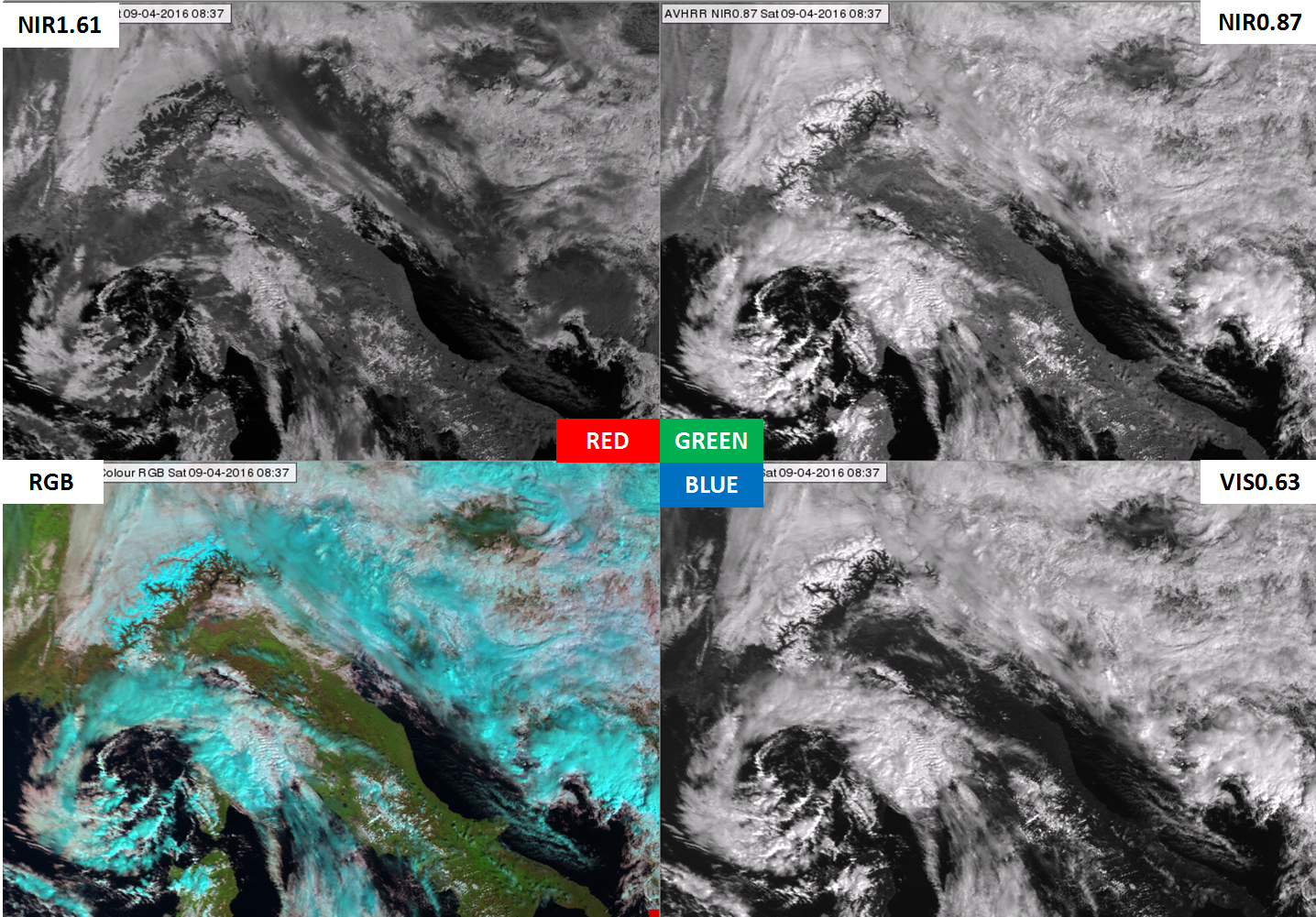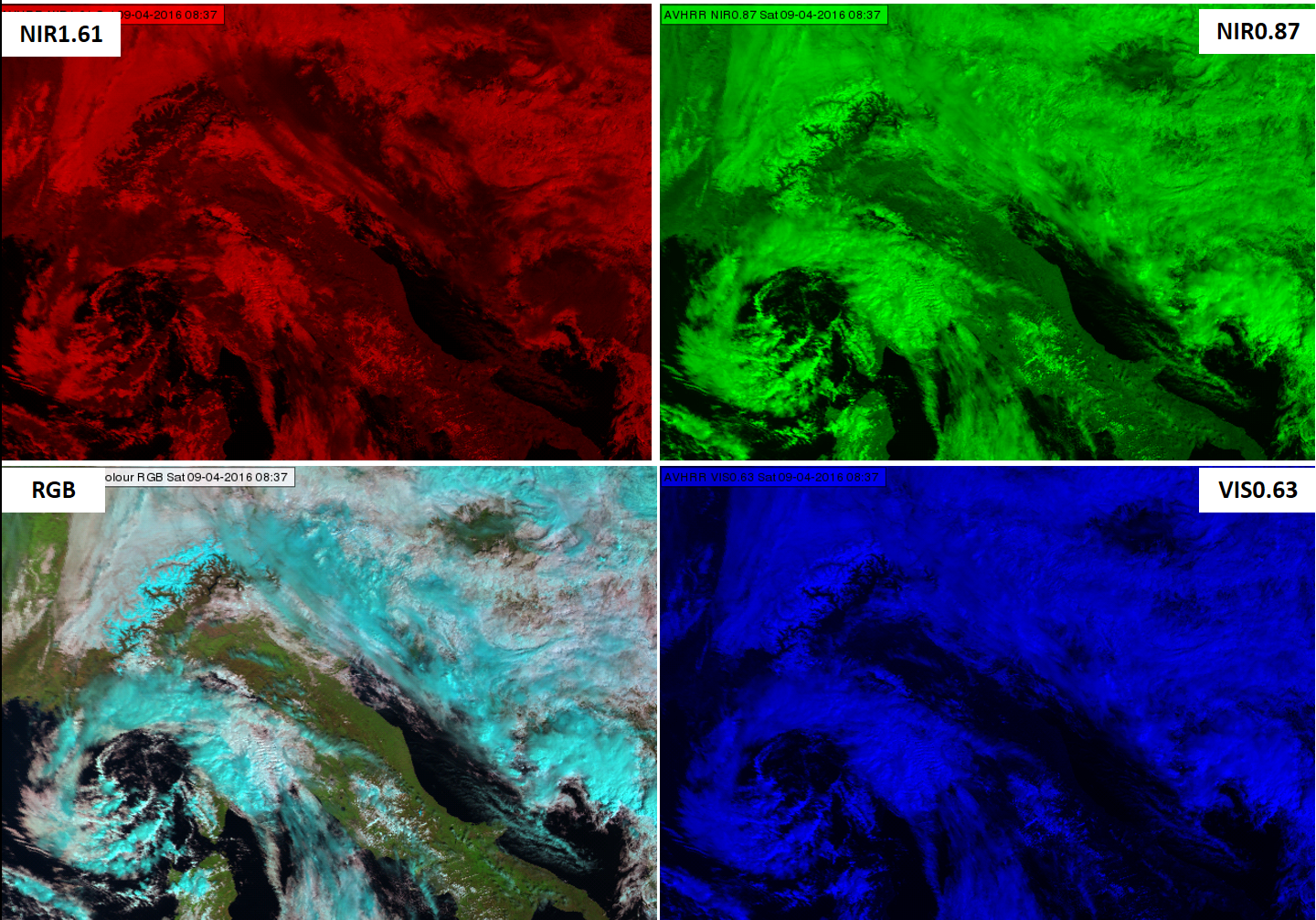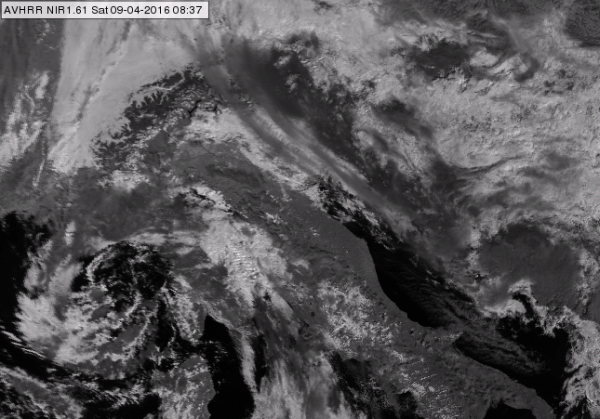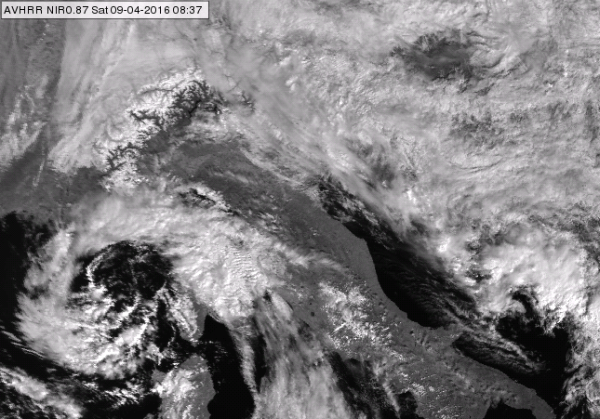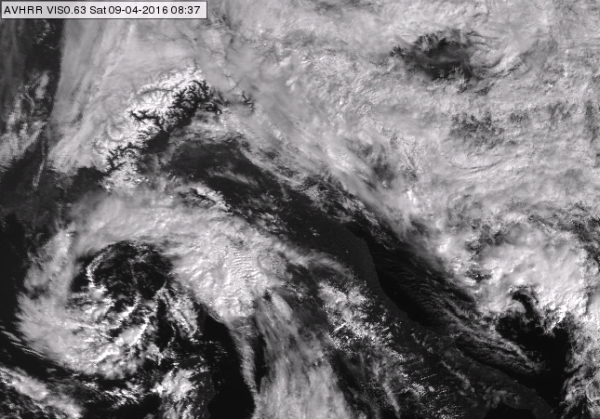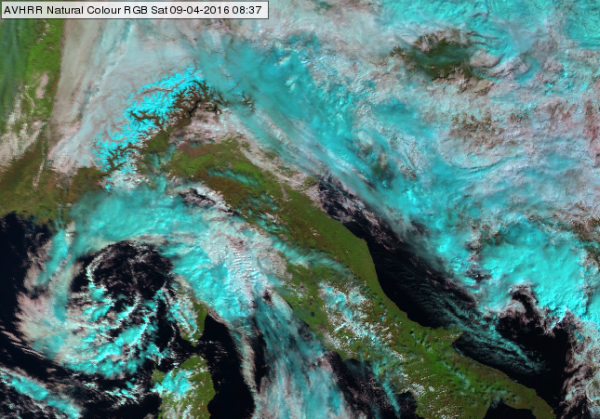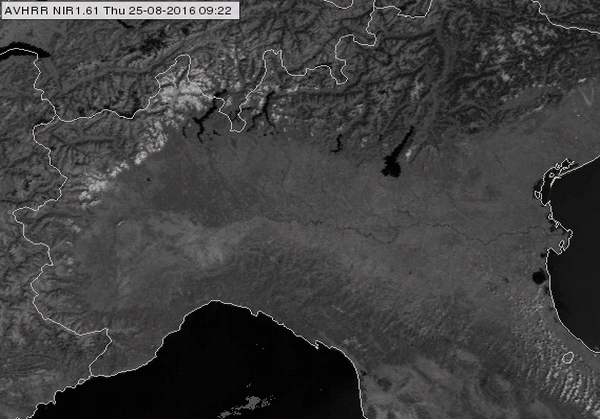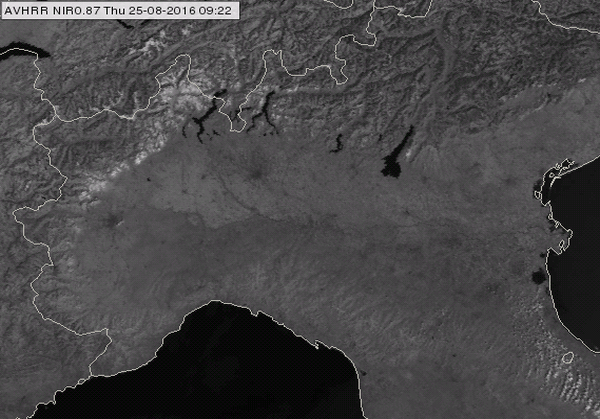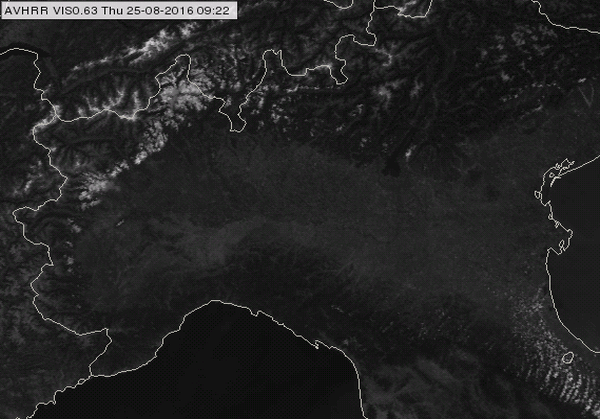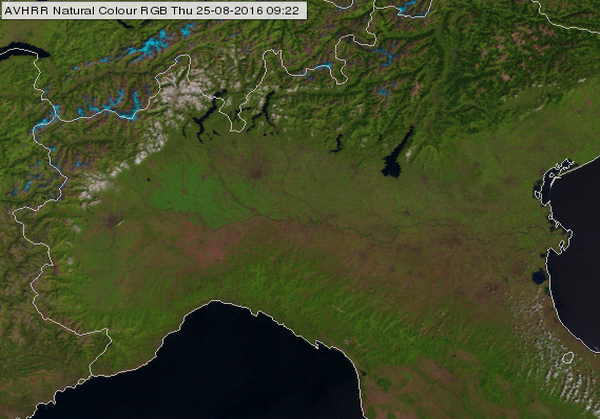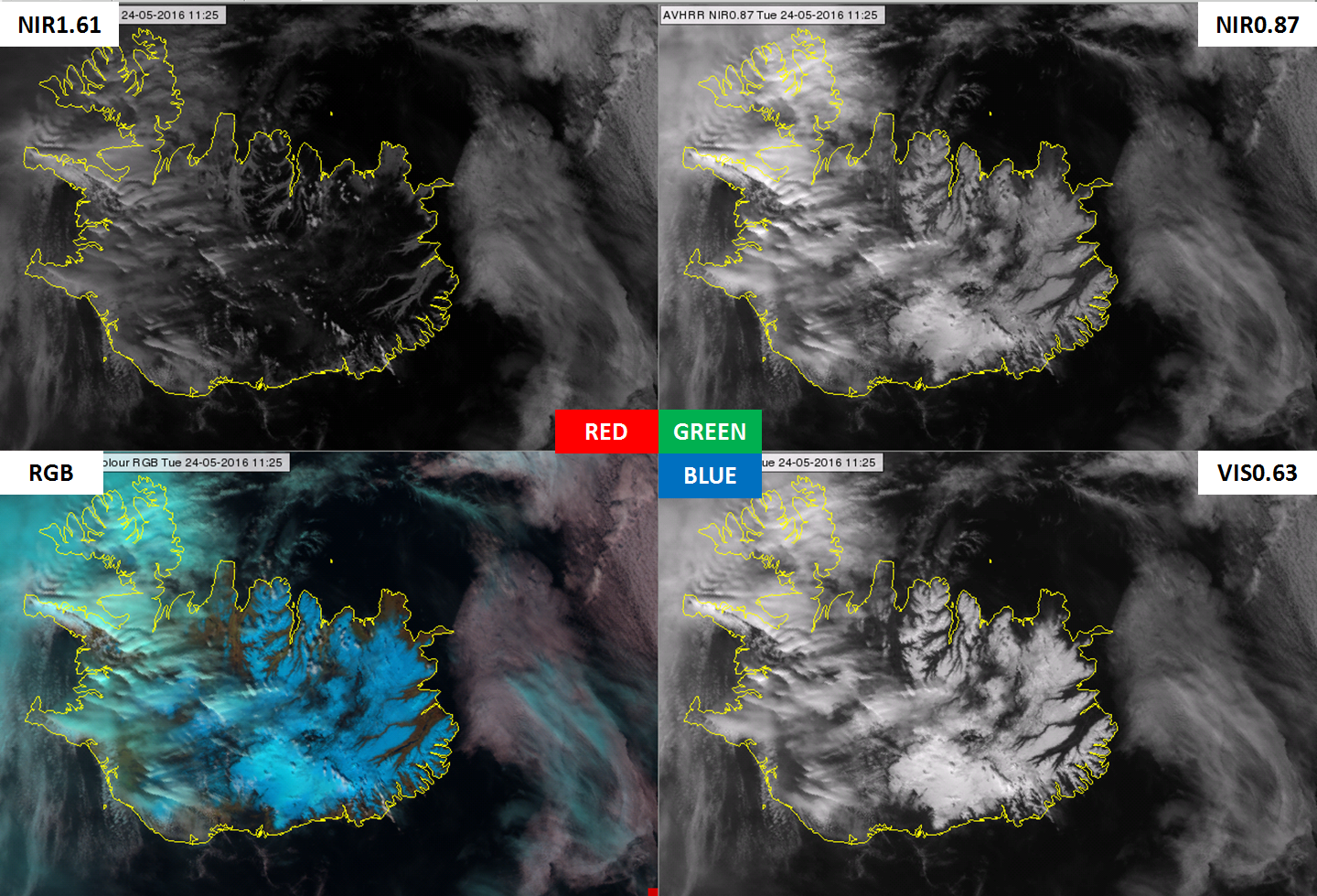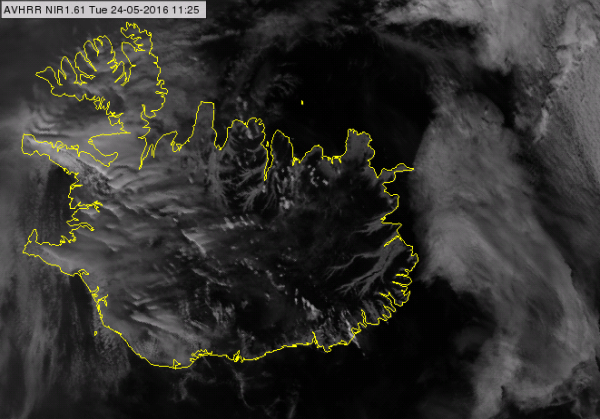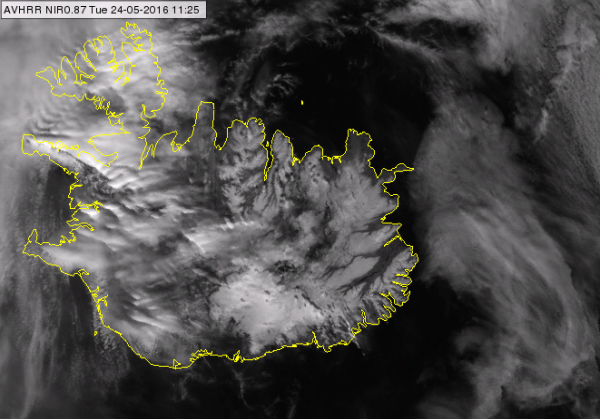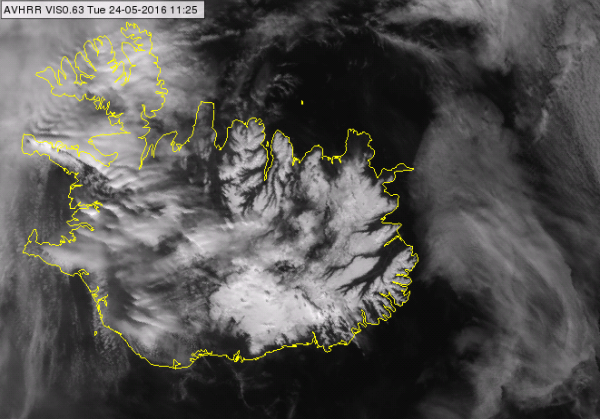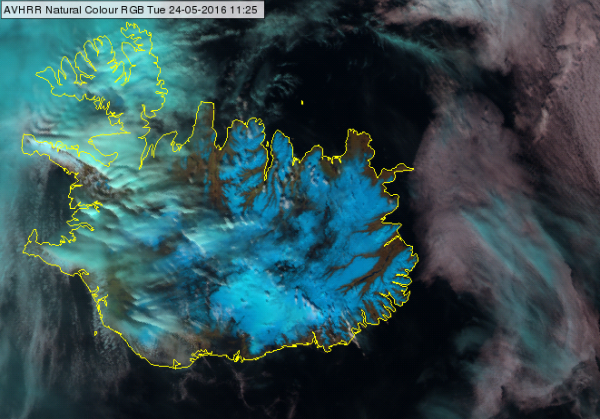How to create Natural Colour RGB images
The 'recipe' of the Natural Color RGB type is summarized in Table 1. It shows which channels are visualized in which color. The measured values should be calibrated to reflectivity. (The reflectivity values should be normalized by the cosine of the solar zenith angle.) The images should be then enhanced - linearly stretched - within the reflectivity ranges shown in the table.
| AVHRR Natural Color RGB | ||||
|---|---|---|---|---|
| Color | Channel | Range | ||
| Red | NIR1.61 | 0 | 100 | % |
| Green | NIR0.87 | 0 | 100 | % |
| Blue | VIS0.63 | 0 | 100 | % |
Table 1: Recipe of the AVHRR Natural Colour RGB scheme
The following examples (Figs. 4 - 6) show how the Natural Color RGB image is made by combining NIR1.61, NIR0.87 and VIS0.63 images. They show both the components as well as the resulting image.
Figure 4a: METOP-A AVHRR NIR1.61 (upper left), NIR0.87 (upper right), Natural Colour RGB (bottom left) and VIS0.63 (bottom right) images of Italy and the Alps on 9 April 2016 at 08:37 UTC
Figure 4b: METOP-A AVHRR NIR1.61 (upper left), NIR0.87 (upper right), Natural Colour RGB (bottom left) and VIS0.63 (bottom right) images of Italy and the Alps on 9 April 2016 at 08:37 UTC
Fig. 4a shows the components of a Natural Color RGB image: the channels which are in the recipe with the corresponding enhancement. The lower left panel shows the Natural Color RGB.
Fig. 4b is the same as Fig. 4a except that the three components are visualized in black to red, black to green and black to blue scales. This is how the three components are used together in the RGB.
Fig. 4c shows the four panels of Fig. 4a on top of each other. Hover your mouse over the image to use the slider.
Figure 4c: 4-Panel display, please use your mouse to compare the four images. METOP-A AVHRR NIR1.61, NIR0.87, Natural Colour RGB and VIS0.63 images of Italy and the Alps on 9 April 2016 at 08:37 UTC
Notice that in Fig. 4 the ice clouds and snow are dark in the NIR1.61 channel but bright in the other two channels. Water clouds are bright in all three channels.
Figure 5a: METOP-A AVHRR NIR1.61 (upper left), NIR0.87 (upper right), Natural Color RGB (bottom left) and VIS0.63 (bottom right) images of the Po Valley region on 25 August 2016 at 09:22 UTC
Figure 5b: 4-Panel display, please use your mouse to compare the four images. METOP-A AVHRR NIR1.61, NIR0.87, Natural Color RGB and VIS0.63 images of the Po Valley region on 25 August 2016 at 09:22 UTC
Notice in Fig. 5 that the area with more green vegetation is brighter in NIR0.87, while in the VIS0.63 and NIR1.61 channels it is darker; in those channels the reflectivity of bare soil is higher than that of vegetation.
Figure 6a: 4-Panel display, please use your mouse to compare the four images. METOP-A AVHRR NIR1.61 (upper left), NIR0.87 (upper right), Natural Color RGB (bottom left) and VIS0.63 (bottom right) images of Iceland on 24 May 2016 at 11:25 UTC
Figure 6b: 4-Panel display, please use your mouse to compare the four images. METOP-A AVHRR NIR1.61, NIR0.87, Natural Color RGB and VIS0.63 images of Iceland on 24 May 2016 at 11:25 UTC
In Fig. 6, note that in the VIS0.63 and NIR0.87 channels snow is brighter than the snow-free valley in the eastern part of Iceland, while in the NIR1.61 channel the opposite is true: snow-free surfaces have higher reflectivity.
